Turkey hunters love the pursuit of gobbling turkeys. It really doesn’t matter where in the country the game takes place, they simply want to hear birds gobble, use their calls, and play the game one more time. And the great thing about turkey hunting is that opportunities abound throughout the U.S. with affordable options making a turkey hunt one of the best bargain hunts you’ll ever do.
The Grand Slam of turkey hunting involves killing each of the four species found across the U.S. (Rio Grande, Merriam’s, Osceola, Eastern). Bagging all four subspecies of the wild turkey will no doubt involve travel as these birds inhabit different parts of the country, north, south, east and west. But it’s a fun and addicting endeavor that keeps avid turkey hunters on the road season after season.
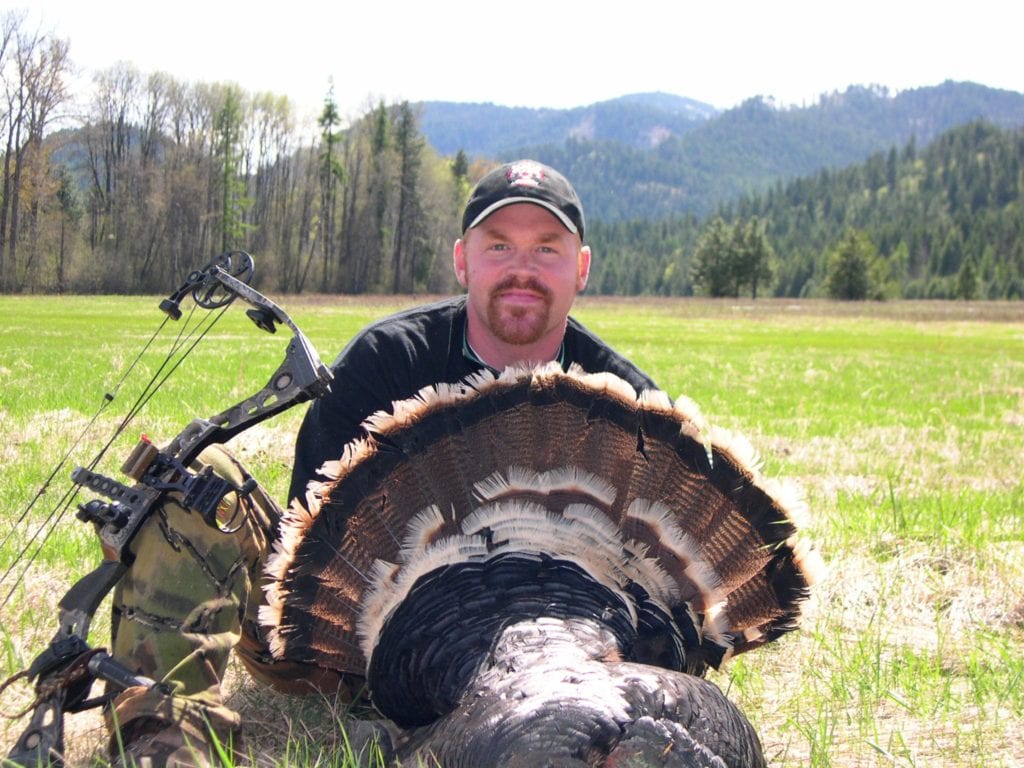
Western states have an ample supply of gobblers in some of the prettiest country you’ll ever come across.
But with the pursuit of the turkey grand slam comes the question, “Which subspecies of turkey is the toughest?”
Just be careful where and when you ask such a question. Hunting camp debates continue to rage each spring when this turkey topic comes up. It seems everyone has their opinion on which tom is the toughest. But let’s take a minute to look at the facts on each of the different subspecies as we narrow down which turkey subspecies truly is the toughest.
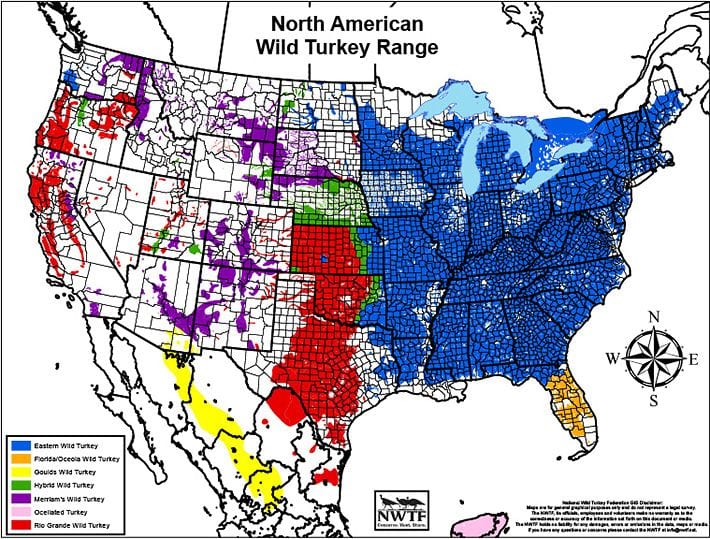
This map provided by the National Wild Turkey Foundation (NWTF) shows where you’ll find each one of the turkey subspecies.
Rio Grande Turkeys
Found in Texas, Oklahoma, Kansas, and scattered across a number of western states, the Rio Grande subspecies is a fun bird to pursue. Turkey hunters annually make the pilgrimage to the Lone Star state to take on this bird in the flat country they call home. They have a distinct yodel gobble that sets them apart from the rest, as well as some of the longest spurs you’ll find anywhere in the country. They often respond well to the call all day long making them a lot of fun to hunt. Their buff colored feathers and fan make them a really pretty bird to video, photograph, and of course, display on the wall. Suitable roost trees are often limited in the places Rio’s call home, so it’s not uncommon to find every bird in town roosted in a single tree. It makes for one of the coolest flydowns you’ll ever encounter.
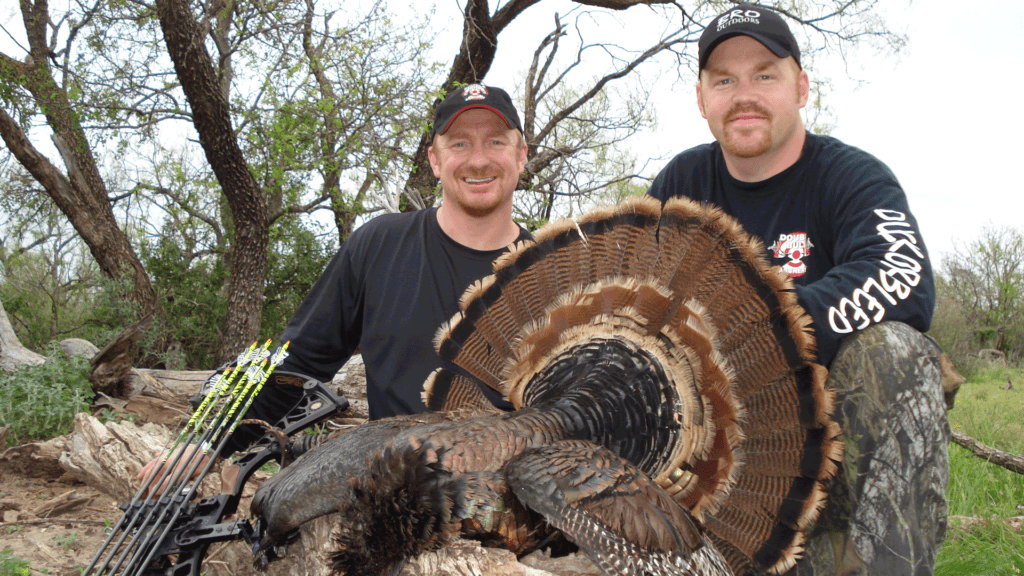
Back in the early Double Bull days, I filmed Keith Beam kill his Texas Rio Grande turkey just moments after the bird flew off the roost.
Merriam’s Turkey
The Merriam’s subspecies can often overlap areas that also hold the Rio. And the two can easily be mistaken for each other depending on where you are. I’ve called in birds in Montana that strutted side by side, one with snow-white feathers and fan that was a Merriam’s through and through, while strutting right next to him was a more buff colored gobbler that you would have easily mistaken for a Rio.
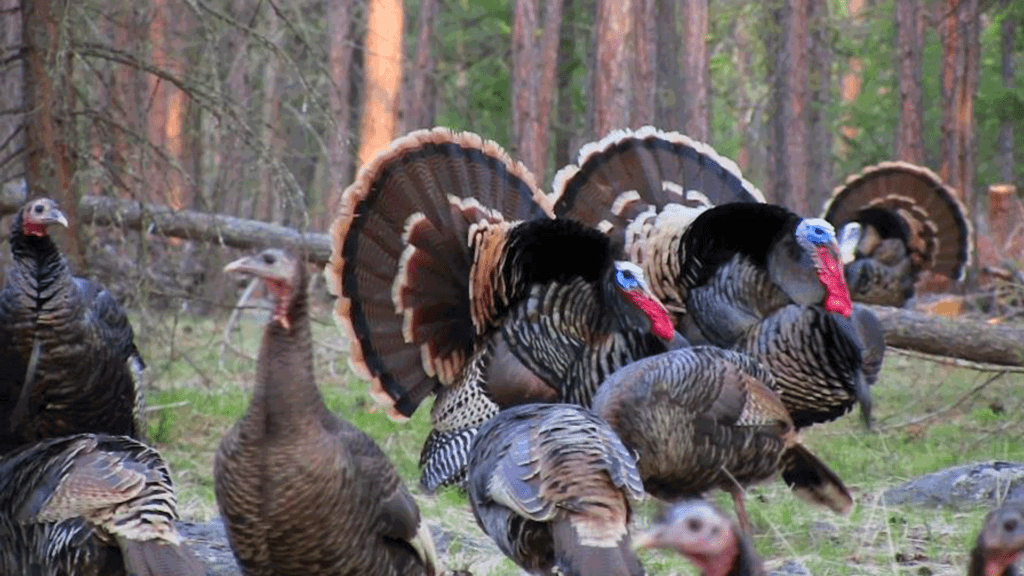
Montana strutters. One looks like a solid Merriam’s. The other, more like a Rio.
Merriam’s turkeys can be a lot of fun to hunt. They are certainly not the brightest birds in the bunch. In fact, some would call them dumb.
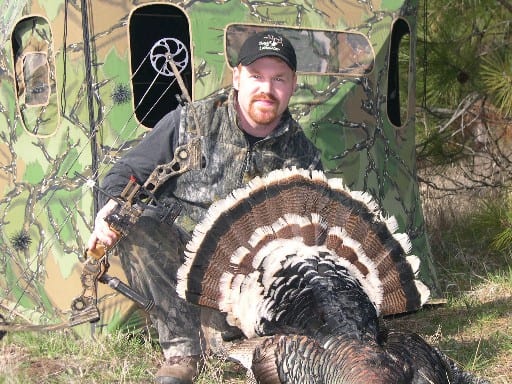
My first hunt for the Merriam’s turkey is one I’ll never forget. It led to an addiction for chasing turkeys across the country.
After living in Montana for a number of years, I can’t say that I would disagree. You can get away with things when hunting the Merriam’s that you’d never pull off with the other subspecies. Heck, the hardest part of hunting Merriam’s turkeys for me was finding birds in wild places. More times than not, you’ll find these birds roosted close to small farms and houses where they can take advantage of what’s left behind in the way of grain and grub on the farm. These are the birds to come pursue after the other subspecies have whipped your tail and you’re needing a turkey fix to feel good about your turkey hunting skills once again.
Osceola Turkey
Some would quickly say that the Florida bird, the Osceola, is the toughest bird on the menu. And because of the fact that Florida is the only place you’ll find him, that certainly plays into the equation. But the toughest thing about hunting the Osceola subspecies is not the fact that the birds are so tough, but rather the fact that terrain is so limited. Public land holding turkeys is typically overrun with hunters, making the public land option the toughest part of the game. However, when you obtain private land access, or hunt with an outfitter, you’ll typically find Osceola turkeys to be some of the most call-friendly birds you’ll ever pursue. They just do it right. They respond to the calls like they’re supposed to. Aggressive interactions with the decoys seems to be the norm rather than a bonus. Osceola turkeys have attitude. You’ll hear it in their voice and see it in their body language the first time you play the game with these super cool swamp gobblers. They look much like the Eastern turkey, with longer legs, slimmer bodies, and a different wing color pattern.
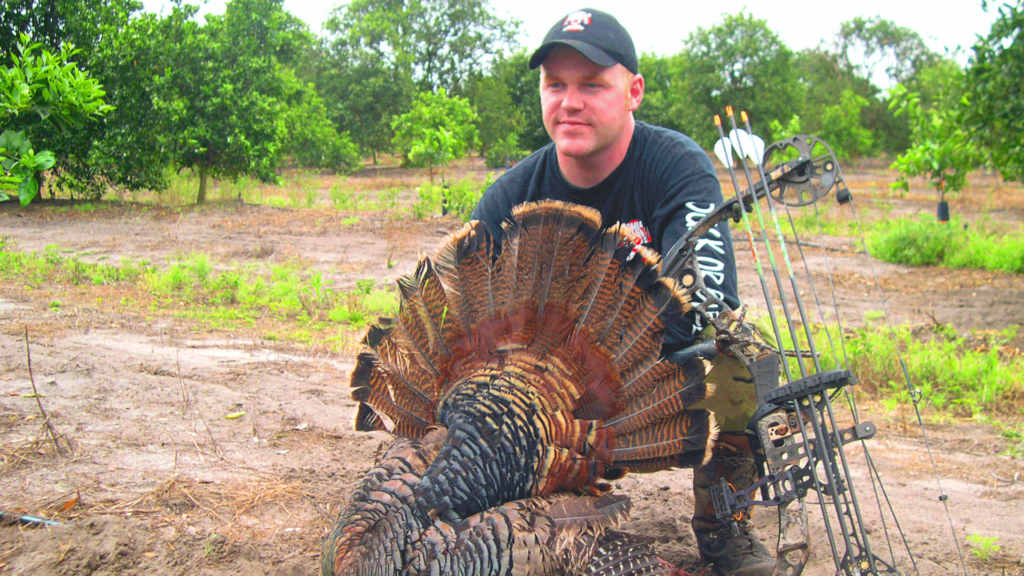
Florida provides the first stop of the year for hunters wanting to kill the Osceola turkey. I hunted near an abundance of orange groves to kill my first Osceola gobbler years ago.
Eastern Turkey
The Eastern subspecies covers the most real estate across the country. You’ll find him from north to south across the eastern U.S., and even scattered into some western states. Whereas the Merriam’s subspecies has a high pitched gobble and vocals, the Eastern bird is a hard-gobbling monster of a bird with attitude in nearly every sound he makes. The Eastern’s are the loudest birds of the bunch. On a crisp, clear morning you can hear their gobbles a mile away. The gobble of a Eastern turkey will literally rattle the woods when he gets up in your business. You may hear the gobble of the other subspecies, but when it comes to the Eastern, you’ll feel him gobble. It’ll change your life, no doubt.
It’s pretty safe to say that the Eastern wild turkey is the toughest of the four birds. He’ll beat you up day after day and just when you think you’ve got him figured out, he’ll make it clear that he’s actually got you figured out.
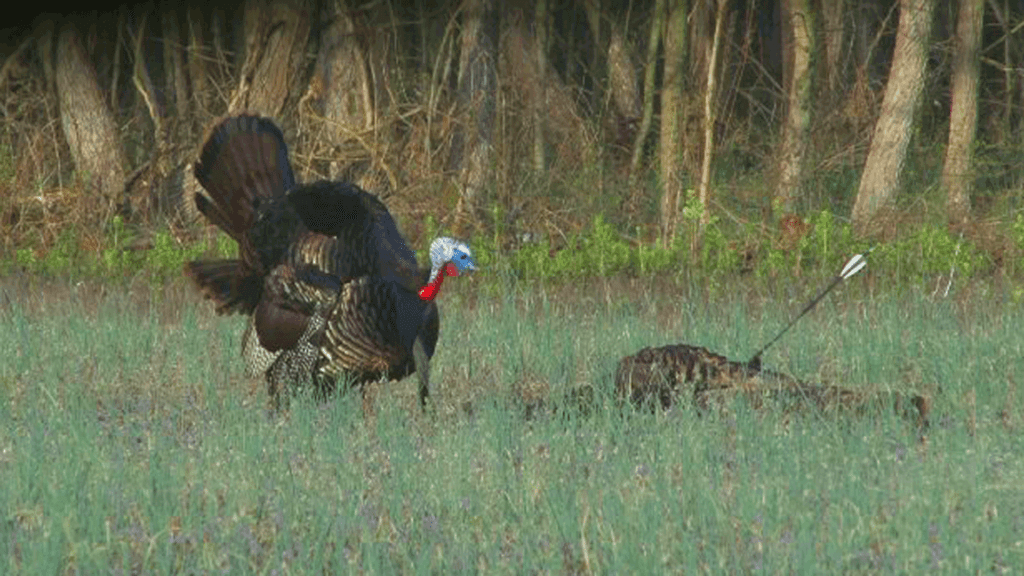
The Eastern subspecies is the most hard-headed gobbler you’ll find anywhere in the country. They show no mercy to turkey hunters or fellow birds alike.
The growing struggle of hunting Eastern turkeys is finding him lonely and looking for love. Growing numbers of hen populations over the years seems to help keep these birds busy all day servicing the ladies. 10 years ago if I heard a bird gobble at mid-day, I’d go ahead and start notchin’ my turkey tag. He was as good as dead. Nowadays it’s a different game. Lonely hens are quick to intercept these birds. And more turkey hunters in the woods than ever before means these birds have had ample calling pressure applied.
But sooner or later that gobbler will find himself lonely and that’s when you better be in the woods. And although times have changed and turkeys are tougher to kill than ever, that 10:00-2:00 timeframe is still the deadliest time to be in the turkey woods.
No matter which of these four turkeys you decide to hunt this season, you can be sure you’ll be in for one of the funnest hunts of the spring season. When you match wits with a knuckle-headed gobbler this spring you’ll realize that he’s called the “boss” for a reason. He’ll drive you crazy…but he’ll always make you wanna come back for more.

 By
By 



